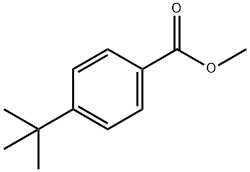Lily aldehyde
Synonym(s):4-tert-Butyl-α-methyl-benzenepropanal;4-tert-Butyl-α-methyl-hydrocinnamaldehyde;Butylphenyl methylpropional;Lilial
- CAS NO.:80-54-6
- Empirical Formula: C14H20O
- Molecular Weight: 204.31
- MDL number: MFCD00047655
- EINECS: 201-289-8
- SAFETY DATA SHEET (SDS)
- Update Date: 2024-11-19 23:02:33

What is Lily aldehyde?
Chemical properties
Lily aldehyde is a homolog of
cyclamenaldehyde. The racemic compound is a colorless to slightly yellow liquid
with a mild-floral odor, reminiscent of cyclamen and lily of the valley.
The aldehyde is prepared by the same routes as cyclamenaldehyde.
Other routes start from ??-methylcinnamaldehyde. ??-Methylcinnamaldehyde
(from benzaldehyde and propionaldehyde) is hydrogenated to ??-methyldihydrocinnamic
alcohol.The alcohol is alkylated with tert-butyl chloride or isobutene to
4-tert-butyl-??-methyldihydrocinnamic alcohol, which is subsequently dehydrogenated to the desired aldehyde.
4-tert-Butyl-??-methyldihydrocinnamaldehyde is more stable than cyclamenaldehyde
and is a popular component of flower compositions, particularly lily of the
valley and linden types, because of its mild, pleasant, blossomfragrance. It is used
in a wide range of perfume types, but especially in soap and detergent perfumes.
The Uses of Lily aldehyde
In addition to its applications in the perfume and aroma industry, lilial is used mainly for the synthesis of substituted 3-(4-tert-butylphenyl)-2-methylpropylamines, a new class of substances with fungicidal properties. These compounds are effective against mildew in barley and wheat.
The Uses of Lily aldehyde
2-(4-tert-Butylbenzyl)propionaldehyde may be used as a reference standard for the determination of 2-(4-tert-butylbenzyl)propionaldehyde in:
- Human urine samples by ultra-high performance liquid chromatography-tandem mass spectrometry (UHPLC-MS/MS) equipped with electrospray ionization (ESI) source and multiple reaction monitoring (MRM) mode of detection.
- Deodorants and air fresheners by sonication extraction coupled with gas chromatography-mass spectrometry (GC-MS).
- Scented consumer products by GC-MS as well as GC in combination with olfactometry.
What are the applications of Application
2-(4-tert-Butylbenzyl)propionaldehyde is 3-(p-tert-Butylphenyl)isobutylaldehyde is a synthetic Lily of the Valley (flower) fragrance that is commonly used in bodycare cosmetics. 3-(p-tert-Butylphenyl)isobutylaldehyde is also suspected to be a cause for allergic contact dermatitis in humans.
Production Methods
Lily aldehyde is produced industrially almost solely by aldol condensation of 4-tert-butylbenzaldehyde and propionaldehyde to give 4-tert-butyl-α-methylcinnamaldehyde, which can be hydrogenated selectively on noble metal catalysts such as Pd, Rh, Pd – Pr2O3 on Al2O3, or on modified cobalt catalysts. The aldol condensation and the hydrogenation can be carried out in one step in the presence of a hydrogenation catalyst.
The Friedel – Crafts reaction of 4-tertbutylbenzene with methacrolein or methacrolein diacetate proceeds in an analogous manner to the preparation of cyclamenaldehyde.
Further possibilities are the Rh-catalyzed hydroformylation of 1-(4-tert-butylphenyl)-1- methoxypropene and subsequent partial hydrogenation, the palladium salt catalyzed reaction of 4-tert-butylphenylhalide with methallylalcohol, and the dehydrogenation of 3-(4-tert-butylphenyl)-2-methylpropanol on silver catalysts.
General Description
2-(4-tert-Butylbenzyl)propionaldehyde is categorized under the synthetic fragrance class of compounds widely utilized in consumer products such as perfumes, after shave lotions, cosmetics, etc.
Flammability and Explosibility
Non flammable
Trade name
Lilestralis Pure (Innospec), Lysmeral® Extra (BASF).
Contact allergens
Lilial? is a synthetic compound listed as a fragrance allergen. Its presence is indicated on cosmetics within the EU.
Properties of Lily aldehyde
| Melting point: | 106-109 °C |
| Boiling point: | 150°C 10mm |
| Density | 0.946 g/mL at 20 °C(lit.) |
| vapor pressure | 0.25Pa at 20℃ |
| refractive index | n |
| Flash point: | 100°C |
| storage temp. | 2-8°C |
| solubility | Chloroform (Sparingly), Ethyl Acetate (Slightly) |
| form | neat |
| form | Liquid |
| color | Colorless to Light yellow |
| Odor | at 100.00 %. floral muguet watery green powdery cumin |
| Water Solubility | 33mg/L at 20℃ |
| BRN | 880140 |
| CAS DataBase Reference | 80-54-6(CAS DataBase Reference) |
| NIST Chemistry Reference | Lilial(80-54-6) |
| EPA Substance Registry System | Benzenepropanal, 4-(1,1-dimethylethyl)-.alpha.-methyl- (80-54-6) |
Safety information for Lily aldehyde
| Signal word | Warning |
| Pictogram(s) |
 Exclamation Mark Irritant GHS07  Health Hazard GHS08 |
| GHS Hazard Statements |
H302:Acute toxicity,oral H315:Skin corrosion/irritation H317:Sensitisation, Skin H361:Reproductive toxicity H412:Hazardous to the aquatic environment, long-term hazard |
| Precautionary Statement Codes |
P202:Do not handle until all safety precautions have been read and understood. P273:Avoid release to the environment. P280:Wear protective gloves/protective clothing/eye protection/face protection. P301+P312:IF SWALLOWED: call a POISON CENTER or doctor/physician IF you feel unwell. P302+P352:IF ON SKIN: wash with plenty of soap and water. P308+P313:IF exposed or concerned: Get medical advice/attention. |
Computed Descriptors for Lily aldehyde
| InChIKey | SDQFDHOLCGWZPU-UHFFFAOYSA-N |
Lily aldehyde manufacturer
Privi Speciality Chemicals Ltd.
New Products
(S)-3-Aminobutanenitrile hydrochloride 4-Methylphenylacetic acid N-Boc-D-alaninol N-BOC-D/L-ALANINOL Tert-butyl bis(2-chloroethyl)carbamate 3-Morpholino-1-(4-nitrophenyl)-5,6-dihydropyridin- 2(1H)-one Furan-2,5-Dicarboxylic Acid Tropic acid S-2-CHLORO PROPIONIC ACID ETHYL ISOCYANOACETATE 2-Bromo-1,3-Bis(Dimethylamino)Trimethinium Hexafluorophosphate 4-IODO BENZOIC ACID 3-NITRO-2-METHYL ANILINE 1-(2,4-DICHLOROPHENYL) ETHANAMINE (2-Hydroxyphenyl)acetonitrile 4-Bromopyrazole 5,6-Dimethoxyindanone 2-(Cyanocyclohexyl)acetic acid 4-methoxy-3,5-dinitropyridine 1-(4-(aminomethyl)benzyl)urea hydrochloride 2-aminopropyl benzoate hydrochloride diethyl 2-(2-((tertbutoxycarbonyl)amino) ethyl)malonate tert-butyl 4- (ureidomethyl)benzylcarbamate Ethyl-2-chloro((4-methoxyphenyl)hydrazono)acetateRelated products of tetrahydrofuran








You may like
-
 80-54-6 4-tert-Butyl-alpha-methylhydrocinnamaldehyde 98%View Details
80-54-6 4-tert-Butyl-alpha-methylhydrocinnamaldehyde 98%View Details
80-54-6 -
 2-(4-tert-Butylbenzyl)propionaldehyde, 98% CAS 80-54-6View Details
2-(4-tert-Butylbenzyl)propionaldehyde, 98% CAS 80-54-6View Details
80-54-6 -
 3-(4-tert-Butylphenyl)isobutyraldehyde CAS 80-54-6View Details
3-(4-tert-Butylphenyl)isobutyraldehyde CAS 80-54-6View Details
80-54-6 -
 Lilial solution CAS 80-54-6View Details
Lilial solution CAS 80-54-6View Details
80-54-6 -
 2-(4-tert-Butylbenzyl)propionaldehyde CAS 80-54-6View Details
2-(4-tert-Butylbenzyl)propionaldehyde CAS 80-54-6View Details
80-54-6 -
 1975-50-4 98%View Details
1975-50-4 98%View Details
1975-50-4 -
 14714-50-2 (2-Hydroxyphenyl)acetonitrile 98+View Details
14714-50-2 (2-Hydroxyphenyl)acetonitrile 98+View Details
14714-50-2 -
 118753-70-1 98+View Details
118753-70-1 98+View Details
118753-70-1